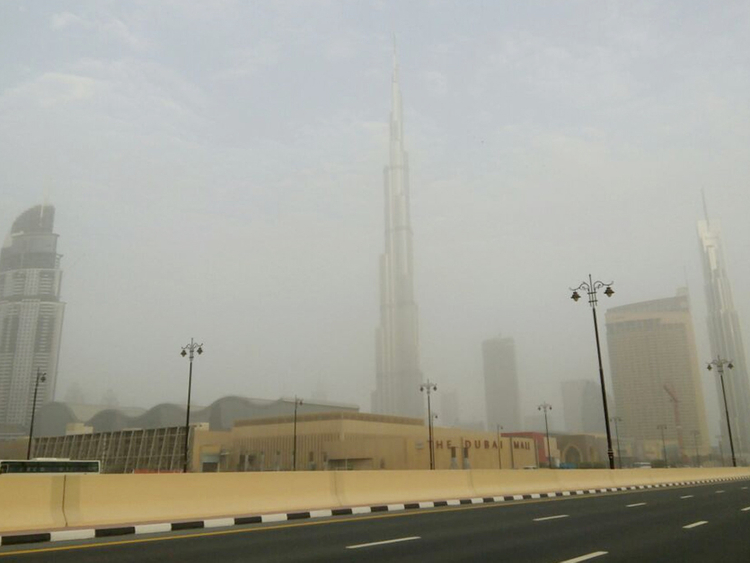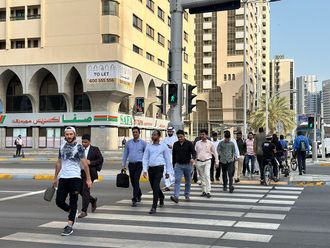
Dubai: A strong dust storm swept across the northern emirates on Thursday morning, reducing visibility for commuters as they made their way to work.
The National Centre of Meteorology and Seismology (NCMS) said that the dust storm affected several areas of the UAE as early as 5.30am, and will remain at its peak until around 10am.
— UAE WEATHER (@NCMS_media) July 13, 2017
The NCMS also issued a cautionary message, warning residents of strong winds and dust storms that will continue until Saturday night.
Satellite images provided by the NCMS in Abu Dhabi shows the effect of the dust storm in the UAE.
The pink colour indicates dust locations in the UAE and across the Gulf. As the pink colour gets darker, the density of dust increases.
Despite the hot and windy weather, the NCMS said the southern and eastern regions are likely to get rain on Thursday afternoon and over the weekend.
Temperatures will reach highs of 49C in internal areas, and up to 47C and 39C in coastal and mountain areas respectively.
current weather in Dubai: clear sky, 38°C
— Dubai Weather (@DubaiAE) July 13, 2017
27% humidity, wind 3kmh, pressure 995mb
Southeasterly to northeasterly winds will blow across the country, with a maximum wind speed of 34 to 40 kilometres per hour.
The weather forecaster at the NCMS also warned that the dust could lower visibility to less than 1 kilometre in some areas inland, and to drive with caution. Humidity will also increase at night and into the early morning, which may bring about fog and mist.
Strong winds and rough seas will affect the Arabian Gulf and the Oman sea until Friday afternoon.
Health precautions
The following precautions can help you protect yourself and minimise the adverse effects of a dust storm:
- Avoid outdoor activity. If you must go outside, spend as little time outside as possible.
- Cover your nose and mouth with a mask or damp cloth to reduce exposure to dust particles.
- Avoid vigorous exercise, especially if you have asthma, diabetes or a breathing-related condition.
- Stay indoors, with windows and doors closed.
- Stay in air-conditioned premises.
- If you are an asthmatic or have a respiratory condition and you develop symptoms such as shortness of breath, coughing, wheezing, or chest pain, follow your prescribed treatment plan. If symptoms do not settle, seek medical advice.
Source: Government of New South Wales, Australia












